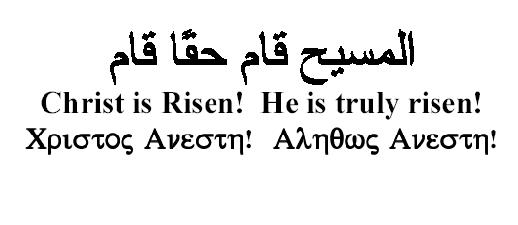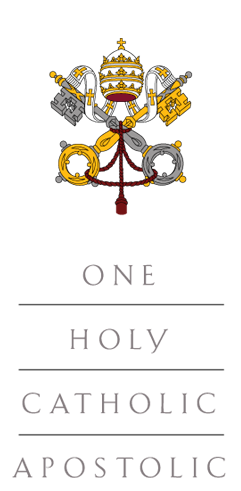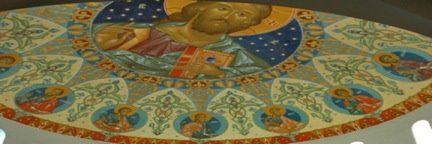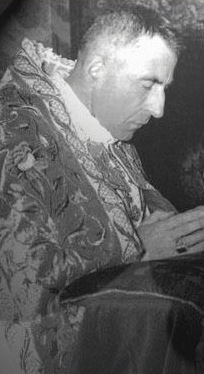
The entire week following Paskha is to be set aside by Eastern Rite Christians for the celebration of the Resurrection. According to the 66th canon of the Council in Trullo: "from the holy day of the Resurrection of Christ our God until New Sunday (i.e. Thomas Sunday) for a whole week the faithful in the Holy Churches should continually be repeating psalms, hymns and spiritual songs, rejoicing and celebrating Christ, and attending to the reading of the Divine Scriptures and delighting in the Holy Mysteries. For in this way shall we be exalted with Christ; raised up together with Him. For this reason on the aforesaid days that by no means there be any horse races or any other public spectacle".
Liturgical aspects
The entire week is considered to be one continuous day, and the name of each day of the week is called "Bright" (e.g., "Bright Monday"). Every service during the week is completely different than at any other time of the year. Everything in the services is sung joyfully rather than read. Normally, the entire Psalter is read during the course of a week (and twice a week during Great Lent), but during Bright Week no psalms at all are read. Each of the Little Hours is replaced by a special service known as the Paskhal Hours. The normal Prayers Before Communion are replaced with the Paskhal Canon.
The hymns chanted every day are identical to those chanted on the Sunday of Paskha, with the exception of a few parts that are taken from the Octoechos (the "Book of the Eight Tones"). Each day has a different tone assigned to it: Easter Sunday is Tone One, Bright Monday is Tone Two, and so on through the eight tones (skipping Tone Seven, the "Grave Tone"): Sunday of Paskha (Tone One), Bright Monday (Tone Two), Bright Tuesday (Tone
During all of Bright Week the Holy Doors on the Iconostasis are kept open—the only time of the year when this occurs. The open doors represent the stone rolled away from the Tomb of Christ, and the Epitaphios (Slavonic: Plashchanitza / English Shroud), representing the burial clothes, is visible through them on the Holy Table (altar). The doors are closed before the Ninth Hour on the eve of Thomas Sunday. However, the Afterfeast of Paskha will continue unt
 il the eve of the Ascension.
il the eve of the Ascension.In Bright Week the normal fasting rules are suspended, and the entire week is fast-free, with special Paskhal foods, such as Paskha (a special dish made of cheese, eggs and other products that were forbidden during Great Lent), kulich and other easter breads being eaten every day. Red Easter eggs are blessed at the end of the Paskhal Vigil, and are eaten throughout Bright Week (though some are usually reserved for Radonitza - on Thomas Sunday when the joy of Paskha is brought to the cemetaries and eggs are left on the graves.).
At the end of Vespers on the Sunday of Paskha there is a Cross Procession three times around the Church, at which the Icon of the Resurrection and the Artos are carried al
 ong with the book of Gospels. On the last circuit, or on each of the 4 corners or sides of the Church building there is a reading from the Gospel and the priest sprinkles the faithful with holy water. On Bright Monday through Bright Saturday, this Cross Procession takes place in the same manner after Matins or the Divine Liturgy. Unfortunately this tradition is becoming less frequent. It can also be done after the Vespers, it is easier for those who work to come to evening vespers after work.
ong with the book of Gospels. On the last circuit, or on each of the 4 corners or sides of the Church building there is a reading from the Gospel and the priest sprinkles the faithful with holy water. On Bright Monday through Bright Saturday, this Cross Procession takes place in the same manner after Matins or the Divine Liturgy. Unfortunately this tradition is becoming less frequent. It can also be done after the Vespers, it is easier for those who work to come to evening vespers after work.The above-mentioned Artos is a loaf of leavened bread that was blessed during the Paskhal Vigil, and is symbolic of the physical presence of the Resurrected Christ among the Apostles. This Artos is kept in the Church during Bright Week, either in the nave, next to the Icon of the Resurrection; in front of the Icon of Christ on the Iconostasis; or in front of the Holy Doors. Throughout the week, whenever anyone enters the church, he or she kisses the Artos as well as the icons, as a means of symbolically greeting the resurrected
 Christ. Special bread stamps with icons of the resurrection can be purchased for the Artos or it can be inscribed before baking with the initials of Paskha (XB-Slavonic, XA-Greek, HA-Romanian, CA-Yupik or CR-English whichever the language)
Christ. Special bread stamps with icons of the resurrection can be purchased for the Artos or it can be inscribed before baking with the initials of Paskha (XB-Slavonic, XA-Greek, HA-Romanian, CA-Yupik or CR-English whichever the language)On Bright Friday, in addition to the normal Paskhal hymns and the hymns from the Octoechos, special stichera and a canon in honor of the Theotokos (Mother of God or Birthgiver of God) are chanted in commemoration of her Icon of the "Life-giving Spring."
The Life-giving Spring or Life-giving Font is both the feast day of a historic church in Constantinople and an icon of the Theotokos (Virgin Mary) which is venerated by the Eastern Churches.
The tradition surrounding the feast concerns a soldier named Leo Marcellus, who would later become the Byzantine Emperor Leo I. On April 4, 480,[1] as Leo was passing by the grove, he came across a blind man who had become lost. Leo took pity on him, led him to the pathway, seated him in the shade and began to search for water to give the thirsty man. Leo heard a voice say to him, "Do not trouble yourself, Leo, to look for water elsewhere, it is right here!" Looking about, he could see no one, and neither could he see any water. Then he heard the voice again, "Leo, Emperor, go into the grove, take the water which you will find and give it to the thirsty man. Then take the mud [from the stream] and put it on the blind man's eyes.... And build a temple [church] here ... that all who come here will find answers to their petitions." Leo did as he was told, and when the blind man's eyes were anointed he regained his sight.
After he became emperor, Leo built a church dedicated to the Theotokos of the Life-giving Spring over the site where the spring was located.[2] After the Fall of Constantinople in 1453, the church was torn down by the Turks, and the stones used to build a mosque of Sultan Bayezid. Only a small chapel remained at the site of the church. Twenty-five steps led down to the site of the spring surrounded by railing. As a result of the Greek Revolution of 1821, even this little chapel was destroyed and the spring was left buried under the rubble.
In 1833 the reforming Ottoman Sultan Mahmud II gave permission for the Christians to rebuild the church. When the foundations
 of the original church were discovered during the course of construction, the Sultan issued a second firman permitting not only the reconstruction of the small chapel, but of a large church according to the original dimensions. Construction was completed on December 30, 1834, and theEcumenical Patriarch, Constantine II consecrated the church on February 2, 1835.
of the original church were discovered during the course of construction, the Sultan issued a second firman permitting not only the reconstruction of the small chapel, but of a large church according to the original dimensions. Construction was completed on December 30, 1834, and theEcumenical Patriarch, Constantine II consecrated the church on February 2, 1835.On September 6, 1955, the church was destroyed again by Moslems during a riot. Another small chapel has been rebuilt on the site, but the church has not yet been restored to its former size. The spring still flows to this day and is considered by the faithful to have wonderworking properties.
The feast day is observed on Bright Friday; i.e., the Friday following Paskha (Easter). It is the only feast day which may be celebrated during Bright Week, all other commemorations which happen to fall during this time are usually transferred to another day. The propers (hymns and prayers) of the feast are combined with the Paskhal hymns, and there is often a Lesser Blessing of Waters performed after the Divine Liturgy on Bright Friday.
Outside the Imperial City of Constantinople, near the Golden Gate (Porta Aurea) used to be found a grove of trees. There was located a shrine which from early times had been dedicated to the Theotokos and a spring of water. Over time, the grove became overgrown and the spring became fetid.
Bright Week begins the liturgical season known as the Pentecostarion, the period of fifty days which begins on Paskha and continues to Pentecost and its afterfeast. (as an aside - 7 x 7 or pefect times perfect PLUS 1 = 50 the FULLNESS, birth of the Church)
Every day throughout the coming year is dependent upon the date of Paskha for determining both the Tone of the Week (Octoechos - 8 tones) and the Epistle and Gospel readings.
In short:ChurchChurch
In Bright Week, our prayers in Church and at home are sung and not read and the usual morning and evening prayers are replaced by the Paskhal Hours.
In Bright Week, we do not read from the psalter at home or in Church for the prophecies have been fulfilled for Christ is risen!
In Bright Week, the entire Paskhal season there is no prostrating or kneeling permitted in Church or at home for we stand with the resurrected Christ.
In Bright Week and throughout the Paskhal season we begin all of our prayers at home and in Church by singing the troparion of Paskha 3x: “Christ is risen from the dead, trampling down death by death, and upon those in the tombs bestowing life!”
And we end with it also then chant “We glorify His rising on the third day”
From Paskha to Pentecost, we do not pray “O Heavenly King, the Comforter, the Spirit of Truth…” for the Comforter comes on Pentecost.







































No comments:
Post a Comment